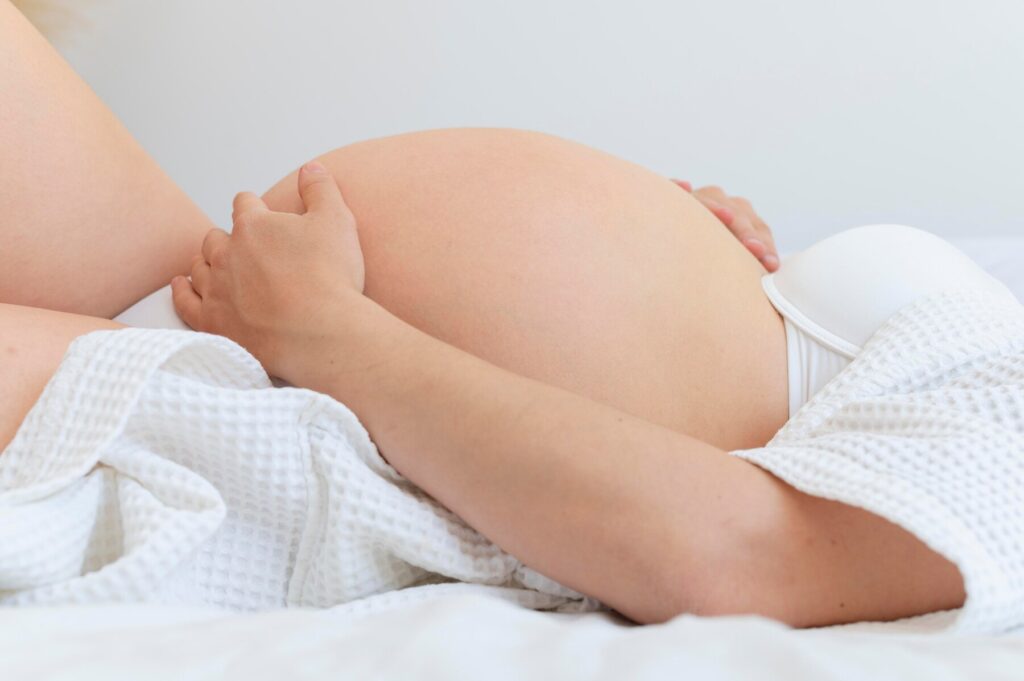Pregnancy is an exciting, yet physically demanding journey, and it often comes with its own set of discomforts. From swollen feet to back pain, the body undergoes significant changes, making it essential to take extra care during this time. Pregnancy massage has become an increasingly popular way to provide comfort and relief for expectant mothers, offering a range of physical and emotional benefits. In this article, we’ll explore how pregnancy massage works, its safety, and how it supports future mothers throughout their pregnancy.

Pregnancy Massage
What is Pregnancy Massage?
Pregnancy massage, often referred to as prenatal massage, is a therapeutic technique designed specifically for women who are expecting. Unlike regular massage, pregnancy massage takes into account the physiological changes that occur during pregnancy, such as the growing belly and hormonal shifts. The massage is usually performed by a trained therapist who understands the safety precautions necessary for the treatment of pregnant women. The key difference in pregnancy massage is that special care is taken to avoid pressure on certain points of the body that could be harmful during pregnancy.
Additionally, the massage techniques may be adjusted to focus on relieving tension in areas like the lower back, hips, and legs, where many women experience discomfort as their pregnancy progresses. It’s also important to note that the position in which the woman lies during the massage may be altered to ensure comfort and avoid placing pressure on the abdomen or any sensitive areas.
Safety for Mom and Baby
One of the most crucial concerns when it comes to pregnancy massage is ensuring that it is safe for both the mother and the baby. A well-trained massage therapist will be able to provide a safe and effective massage by using gentle, non-invasive techniques. It’s essential to choose a therapist who is certified in pregnancy massage, as this ensures they have the necessary knowledge about how to adapt the massage techniques for expectant mothers.
In general, pregnancy massage is safe after the first trimester, but it’s always a good idea for the mother to consult her doctor or midwife before beginning any new treatment, including massage. The therapist should avoid certain pressure points on the body that could induce contractions or have other negative effects, which is why specialised training is key. Furthermore, the mother’s comfort is paramount throughout the treatment. The therapist will typically adjust the position and technique based on what feels best for the mother and the stage of her pregnancy.
How Pregnancy Massage Supports Women
Pregnancy massage offers a multitude of benefits for expectant mothers. One of the main advantages is the reduction of muscle and joint pain. As the body changes during pregnancy, the additional weight and shifting of the centre of gravity can put strain on the muscles, especially in the lower back and hips. Pregnancy massage helps alleviate this discomfort by improving circulation, relaxing the muscles, and promoting overall relaxation.
Swelling, particularly in the legs and feet, is another common issue during pregnancy. Massage can help improve lymphatic drainage, which in turn reduces swelling and encourages better blood flow. This can be particularly beneficial in the later stages of pregnancy when the body is more prone to water retention.
Another key benefit of pregnancy massage is the reduction of stress and anxiety. The physical touch and soothing techniques used in the massage help to release endorphins, the body’s natural pain-relieving and mood-enhancing chemicals. For many women, pregnancy can be an emotional rollercoaster, and a massage can help to calm the mind, reduce stress, and promote a sense of overall well-being.
In addition to the physical benefits, pregnancy massage can also help with sleep. Many pregnant women experience difficulty sleeping due to discomfort, hormonal changes, or anxiety about the upcoming birth. By addressing muscle tension and promoting relaxation, pregnancy massage can help women achieve a deeper, more restful sleep.
Finally, pregnancy massage can help improve posture. As the baby grows, the body adjusts to accommodate the added weight, which often leads to postural imbalances. A massage can help correct these imbalances and support proper alignment, which can reduce the risk of long-term musculoskeletal issues after pregnancy.
Pregnancy massage is a highly effective way to support the physical and emotional well-being of expectant mothers. It provides relief from common pregnancy-related discomforts, such as back pain, swelling, and muscle tension, while promoting relaxation and stress reduction. The key to a successful pregnancy massage experience is ensuring that the therapist is well-trained and follows proper safety protocols to ensure the health and comfort of both the mother and the baby. When performed safely, pregnancy massage can be a valuable tool in helping women navigate the challenges of pregnancy while promoting overall well-being.
Massage Treatments
Check out our massages
Choose the right massage for you and combine relaxation with therapy for your body and muscles.
If you need help, contact me!

